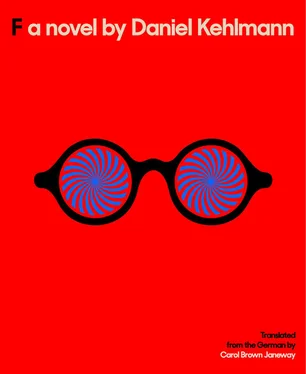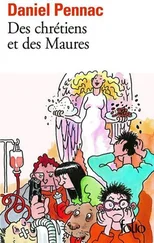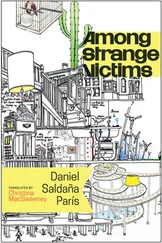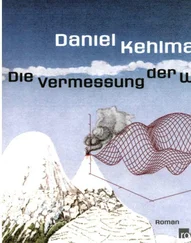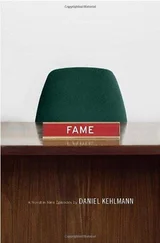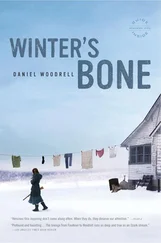A few weeks later I raised it for the first time. We had just been looking at his most recent work: a farmhouse with barn, a farmhouse with farmers mowing, a farmhouse with surly, arrayed farm family, plus cockerel, manure pile, and clouds.
“Let’s agree that it’s possible to become famous by fulfilling all the requirements and doing what’s opportune. Then what? You would be mocking a world that deserves it and simultaneously collecting what you’re owed. What’s bad about that?”
“That you’re not owed it in such a case.” He stood before me, self-righteous as only a loser can be. His narrow face, the fine lines of his nose, the flashing eyes, the gray hair, and the loden jacket with its silver buttons — it was all made to order for the magazines.
“It would be a victimless crime,” I said. “Nobody loses anything.”
“You yourself would be the loser.”
“But what would you lose? Your soul?” I pointed at the farmhouses. “Your art?”
“You’d lose both.”
And neither of them exist, I wanted to reply, but I kept quiet. So that’s how it goes, I thought: with pride. When you’re proud, you can tolerate being average. “And if we — as a sort of experiment, if we try it — if we don’t take either of those things too seriously? Either ourselves or art?”
We laughed, but we both knew, he just as much as I, that I was being serious.
“And what,” I asked a week later, “what if we risk it? Paint a couple of pictures we know are likely to please the relevant people. And later we’ll announce it was a joke.”
“It would be quite some joke,” he said thoughtfully.
I’d already finished the first three. A boulevard in Málaga, disfigured with a Dalí sculpture, and painted in the wan naturalistic style of Zurbarán, a rain-soaked German pedestrian precinct in the heavily shaded manner of late Rembrandt, and Tristia 3 , still one of his most famous works to this day — a surreally high-ceilinged museum gallery, with menacing sculptures made of grease and felt displayed in glass cases along the walls and in the center, disturbed and unhappy, a little boy next to a severely ecstatic art teacher: pasty brushwork interspersed with holes and cracks that let the white canvas show right through.
“Heinrich Eulenboeck,” I explained as I showed him the paintings. “A reclusive aristocrat, a proud outsider, who pursues the art of his time with contempt and has missed not one of its developments. In many paintings, with subtle mockery, there are references to the works of this or that contemporary artist whom he considers to be utterly worthless. He’s seen everything, tallied everything, weighed it all, and finally found it wanting.”
“But I’m not an aristocrat. My father had a small factory in Ulm. I sold it when I was twenty.”
“Do you want to sign them yourself?”
He said nothing for a long time. “You’re probably better at that too.”
In fact his signature wasn’t hard to imitate. I put it on all three paintings, then I took photos and sent them, along with an essay about the willful outsider I’d discovered, to my former fellow student Barney Wesler, who was just in the throes of organizing a group exhibition in the Schirn Museum in Frankfurt: Realism at the Millennium . He immediately said he wanted to include them. Two days after the opening there were two long articles in the daily press ecstatically praising Eulenboeck’s paintings: one of them was written by a well-known specialist on Max Ernst, and the other one was by me, and both of us talked of the biggest discovery of the year. Soon after that a young man appeared in Heinrich’s studio who was a writer for Texte zur Kunst . His interview was published a month later under the title “Art, for Me, Is a Cathedral,” enhanced with a photograph of Heinrich looking incredibly aristocratic and condescending. Another interview appeared in Stern . Seven pages plus photos: Heinrich on the battlements of an ancient towered fortress, on board a yacht, at the wheel of a sports car, although he couldn’t even drive, and in a library, with the stem of a Chinese pipe between his teeth. No sign of his paintings.
I’ve never seen anyone play a role better. “Warhol? A commercial artist!”—“Lichtenstein? The country or the charlatan?”—“The only thing kitschier than a Balthus is a cat calendar.”—“Klimt, the apotheosis of artistic handwork!” Such phrases pleased everyone. He repeated them in dozens of newspaper interviews, he repeated them on television, he repeated them at the openings of his exhibitions, he repeated them at the launch of Leroy Hallowan’s book Eulenboeck, or The Great Negation , and he repeated them, word for word, diligently and without variation, in Godard’s short documentary Moi, Eulenboeck, Maître .
“And when do we break the whole thing up?” I asked.
“Maybe not yet.”
“Now would be a good moment.”
“Possible, but …”
I waited, but he didn’t say anything more. We were sitting in a restaurant in Paris, and as I often had recently, I saw that his hand was shaking; the soup spoon was always empty by the time it reached his mouth. He’d obviously forgotten what we’d just been talking about.
Then my dissertation appeared. I had switched themes; now the title was Heinrich Eulenboeck: From the Irony of Tradition to the Realism of Irony . Over 740 pages I unpacked the history of a lone satirist and late-born master of every technique in the repertory of Western painting who only achieved artistic expression in old age.
Of course I was also obliged to laud the farmhouses. In the meantime these had also found their admirers: to some colleagues they represented proof that simple beauty was not yet passé, to others, enigmatic satire. I thoroughly explored both possibilities and avoided taking sides: the very richness was rooted in the ambivalence, which is to say that the artist was being ironic about irony itself and mocking mockery on the way to profound emotion in the sense of the Hegelian upward spiral.
“When do we break it up?” I asked again.
We were in a hotel room in London. Rain was pounding against the window, breakfast sat untouched on the cart from room service, and Saddam Hussein was reviewing a parade on television. Heinrich’s ivory cane was leaning against the wall next to the silver walking stick I had given him recently — by now he needed not just the one but both to walk.
“You’re so young. You don’t understand a thing.”
“What don’t I understand?”
“Any of it — you can’t understand.”
“But what?”
I stared at him. I had never seen a grown man cry before, and I was stunned: I had never expected such a thing. Of course I had known that he would no longer be able to step back again, but what was so terrible about that? Try as I might, I just didn’t get it.
He was right. I really was still very young.
Six months after Heinrich had decided to remain the painter everyone believed him to be, to keep on exhibiting, giving interviews, selling pictures, and being famous, my father came to visit.
We were working in the studio. I was sitting in front of my new PC writing my essay “Realism as a Critique of Ideology in the Work of Heinrich Eulenboeck,” while Heinrich was scratching away at his sketch pad with a shaky hand. He could do this for hours on end, and sometimes he even achieved some drawings. Then the phone rang, and Arthur, without explaining how he had got this number, announced that he was in the neighborhood and could come by.
“Now?”
“Yes.” As always, he sounded surprised that I should be surprised. “Not a good time?”
Half an hour later, as he was standing on the doorstep, I thought he looked tired and unkempt; he was sweating and he hadn’t shaved. Heinrich greeted him in the fashion of a Grand Seigneur, saying “Welcome!” and “I have heard so much about you,” and “What an honor, what a pleasure,” to which my father reacted with restrained but ironic courtesy. We sat down at the table; the housekeeper served us with food she had hastily warmed up in the microwave. Arthur’s eyes flashed while Heinrich talked about Warhol—“a commercial artist!”—Lichtenstein, Beuys, and Kaminski. Unfortunately he’d become accustomed to trotting out the well-worn phrases from his interviews even when there was no microphone in the offing. He gave a lengthy description of his meeting with Picasso, and given that I knew he’d never met him, I had to get up and leave the room in order not to interrupt him.
Читать дальше
